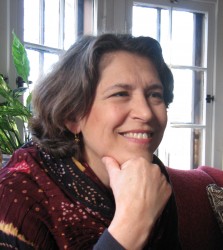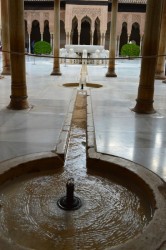
A historian of Islamic art and architecture will deliver the Norman L. and Roselea J. Goldberg Lecture in Art History at Vanderbilt University March 30. D. Fairchild Ruggles, who is also a professor of landscape architecture at the University of Illinois at Urbana-Champaign, will speak at 4:10 p.m. in Cohen Memorial Hall, Room 203.
“Islamic gardens were fully sensory environments, delighting the eyes, nose, ears,” Ruggles says. “The fleeting sensations made by a fountain’s spray or the scent of a rose do not last in the body or in the garden—both living entities—but they leave traces in poetry, visual images and architecture.”

During Ruggles’ talk, “Beyond Vision: Embodied Senses in Islamic Gardens,” she will explore how to study such an ephemeral art form as the garden.
Ruggles is the author of two award-winning books on gardens: Gardens, Landscape and Vision in the Palaces of Islamic Spain (2000) and Islamic Gardens and Landscapes (2008).
Additionally, she has edited or co-edited numerous works, including Women, Patronage and Self-Representation in Islamic Societies (2000), the award-winning Sites Unseen: Landscape and Vision (2007), Cultural Heritage and Human Rights (2007), Intangible Heritage Embodied (2009), On Location (2012), and Islamic Art and Visual Culture: An Anthology of Sources (2011).
The March 30 lecture is sponsored by the Department of History of Art. Parking is available in Lot 95 outside Cohen Hall. For more information call 615-322-2831.

Ruggles will deliver a second lecture, “Water and the Transformation of the Early Islamic Landscape,” March 31 at 2:35 p.m. in Buttrick Hall, Room 101.
“Using an array of water technologies, early Islam transformed the desert in ways that stimulated the economy and produced not only new productive landscapes but gardens for pleasure,” Ruggles says. “But to understand how this happened, we must set aside the historical fascination with the form of chahar bagh (Persian-style garden divided into four parts) as an expressive symbol, and instead look at gardens as environmental systems that served living societies.”
Ruggles’ second talk is sponsored by the Eos Project — which seeks to promote greater understanding of environmental issues through diverse disciplines and channels across Vanderbilt — and the Department of History of Art.
Both of Ruggles’ lectures are free and open to the public.
Fay Renardson contributed to this story.